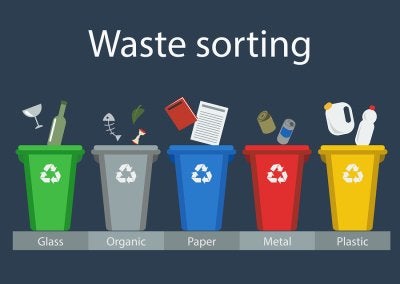People throw out useful materials every day, which contributes to overflowing landfills and excessive energy demands. Fortunately recycling serving Atlanta can help turn the tide by repurposing used materials and putting them back into circulation as new products. This type of waste disposal can be extremely productive and is important when it comes to protecting the environment, but many people are unaware of how recycling actually works. Feel free to keep reading if you would like an inside look at the recycling process. 
Sorting
Once you set your recyclables by the road for pickup or bring them to a recycling center, where do the materials go ? They first move from the collection center to a materials recovery facility to be unloaded. The massive mixture of recyclable materials is then fed to a conveyer belt by a hopper, where it can be initially sorted out by hand. The first order of business is to remove trash and cardboard, which will go to a landfill and fiber baler, respectively. Next, a glass sorting roller removes glass products from the mixture to be used as aggregate. As the conveyer belt continues on, plastic and metal containers are sorted from paper and cardboard materials. Now separated into three lines, materials like cardboard and paper are filtered into bins to be sent to the fiber baler while plastics are sent to the container baler. Finally, metal cans are sorted out via magnet and dropped into their corresponding bins.
Fiber Bales
After paper, cardboard, and other fiber items are removed from the conveyer belt, they are compacted into bales by a fiber baler. These bales are stored until they are ultimately sold or transported to paper mills so that they can be manufactured into new products.
Metal and Plastic
Just like fiber items are compacted into fiber bales, metal and plastic items are formed into bales of their own. There are different types of metals, as well as different types of plastics, and they are baled accordingly. Steel, tin, and aluminum products are repurposed into new metal products, while plastics are turned into anything from new bottles to carpets.

